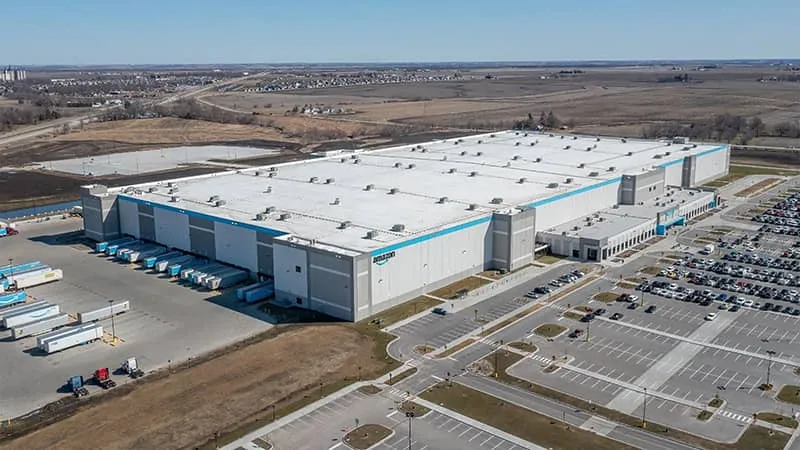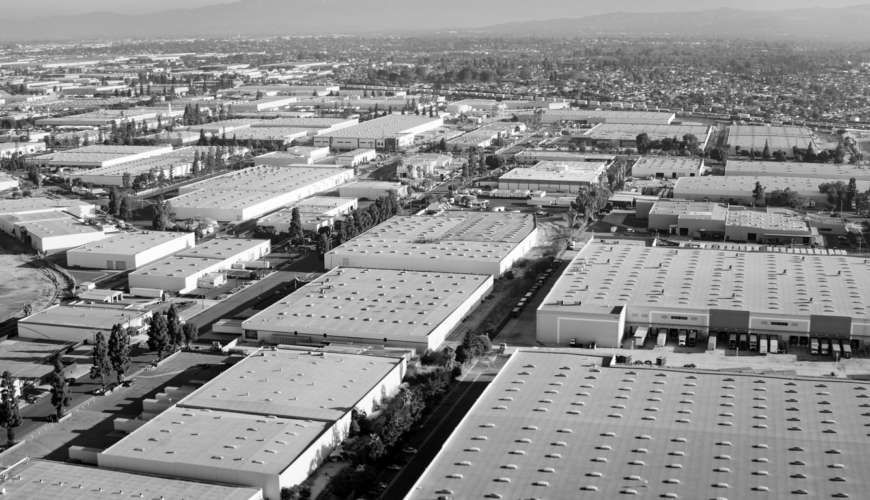Welcome to the topic “Positioning to Sell Your Industrial Property“
Heightened Demand and Favorable Pricing Dynamics
In recent years, there’s been a significant spike in investor interest in the warehouse sector of industrial real estate, especially in major metropolitan markets. And this increasing interest is expected to boost demand within the industrial real estate sector overall.
With this heightened interest mainly due to the significant expansion of e-commerce and the necessity for streamlined logistics and distribution networks, sellers that position themselves to take advantage of this trend are able to appeal to investors.
These sellers are also better able to capitalize on the thriving e-commerce sector and the increasing need for industrial facilities.
Factors Impacting Industrial Real Estate
Consumer behavior
The shift in consumer behavior towards online shopping continues to drive demand for efficient warehouse and distribution centers. As more consumers turn to online platforms for their shopping needs, the infrastructure supporting these transactions becomes increasingly pivotal to the sustainability of commerce.
Efficient warehouses and distribution centers ensure that products are stored, processed, and delivered swiftly, meeting the rising expectations for speedy delivery.

This growing demand places pressure on logistics networks to optimize their operations, making well-located and technologically advanced facilities essential. As e-commerce continues to expand, the importance of robust and responsive logistics infrastructure will only grow, reinforcing the critical role of these properties in the retail ecosystem.
Investors and developers who recognize and respond to this need stand to benefit significantly from the sustained growth in the e-commerce sector.
Location
Industrial properties situated near major cities serve as pivotal hubs in logistics networks, making these locations highly attractive to investors aiming to optimize their investments in the growing industrial market. Proximity to urban centers ensures efficient access to transportation infrastructure, such as highways, ports, and railroads, which is crucial for timely delivery and distribution of goods.
Additionally, these strategic locations offer better access to a skilled labor force and a larger customer base, further enhancing their value.
Investors recognize the potential for higher returns and long-term growth by acquiring properties that can effectively support the increasing demands of e-commerce and global supply chains. As such, urban-adjacent industrial properties are poised to remain key assets in the evolving industrial real estate landscape.
Technology
Technological advancements in warehouse management and automation have significantly increased the appeal of industrial properties. Investors recognize the value of properties equipped with state-of-the-art technologies that enhance operational efficiency and profitability. These technologies, such as automated sorting systems, robotics, and advanced inventory management software, streamline operations and reduce labor costs.

Additionally, the ability to quickly and accurately process orders improves customer satisfaction and reduces delivery times, making these properties more attractive to potential tenants. As the demand for high-tech, efficient logistics solutions grows, properties featuring cutting-edge technologies will continue to be highly sought after by investors looking to capitalize on the benefits of improved productivity and reduced operational expenses.
As industrial real estate continues to evolve in response to these factors, sellers are encouraged to stay up to date with market trends and investor preferences. By focusing on e-commerce growth and new technologies, sellers can make their industrial properties more attractive and profitable. This strategy meets current investor interests and prepares for future market changes, ensuring long-term value in the competitive real estate market.
Opportune Moment for Sellers
The current market conditions offer a great chance for sellers to maximize returns on industrial properties. As the market evolves, sellers should take advantage of strong investor interest and favorable pricing before any changes occur. The recent sale of a warehouse portfolio shows a growing trend of investor interest in industrial properties, especially in top locations near major cities. This increased interest is driven by the rapid growth of e-commerce, which has boosted demand for warehouse and distribution space.
The current market conditions present an excellent opportunity for sellers to maximize returns on industrial properties. As the market continues to evolve, sellers should now take the time to capitalize on strong investor interest and favorable pricing.
Below are some ways that sellers can benefit from these market trends and strategically position their properties to attract investors.
Enhance Property Features
Upgrading infrastructure is crucial for industrial property owners looking to attract investors and maximize returns. By investing in state-of-the-art technologies, such as advanced warehouse management systems, automation, and efficient logistics solutions, business owners can significantly increase operational efficiency.
These modern features not only streamline operations but also reduce costs, making the property more appealing to tech-savvy investors who are looking for facilities that can meet the demands of contemporary logistics and supply chain management.
Additionally, improving sustainability can greatly enhance the attractiveness of industrial properties. Implementing eco-friendly practices and sustainable building features like energy-efficient lighting, solar panels, and water-saving systems can lower operational costs and reduce the environmental footprint of the property.
Given the growing emphasis on corporate social responsibility and environmental sustainability, these green upgrades are increasingly important to investors. They not only contribute to a positive corporate image but also align with global trends towards sustainability.
Highlight Strategic Location
Emphasizing the strategic location of industrial properties is another key strategy for attracting investors. Properties situated in proximity to major cities, transportation networks, and logistics hubs are highly attractive due to their accessibility and connectivity.

The convenience of being close to major highways, railways, ports, and airports can significantly reduce transportation costs and delivery times, which is a critical factor for businesses in the logistics and e-commerce sectors.
Highlighting these advantages can make the property more appealing to potential buyers who prioritize efficiency and convenience. Furthermore, showcasing the benefits of the local market can enhance the property’s attractiveness. This includes emphasizing the economic stability of the area, the availability of skilled labor, and the supportive business environment.
A stable economy ensures a reliable market for goods and services, while a skilled workforce can enhance productivity and innovation. Additionally, a supportive business environment with favorable regulations, incentives, and infrastructure can further attract business owners looking for a thriving and conducive location for their operations. By highlighting these strategic advantages, property owners can effectively position their industrial properties as prime real estate opportunities.
Strategic Moves by Investors
Investors in the industrial real estate market are focused on not only the immediate returns on their investments but also the long-term potential of these investments in the future markets. This approach is driven by the fact that the logistics and e-commerce sectors are continually changing, meaning that investors are looking for properties that can keep pace with these changes.
Future-proofed properties–those that are designed and equipped to adapt to new technologies and shifting logistical demands–are particularly valuable in this context. Such properties offer investors the security that their investments will remain relevant and profitable even as market conditions and technological landscapes change.
Future-Proof Properties
Sellers can position their industrial properties as future-proof assets, appealing to investors seeking sustainable growth and operational excellence in the competitive marketplace by implementing the following:
Enhance Connectivity
High-Speed Internet: Ensuring robust and reliable high-speed internet connectivity supports automation, Internet of Things (IoT) devices, and advanced tracking systems, all of which are essential for maintaining efficiency and competitiveness in the industrial market. By providing high-speed internet, sellers can make their properties more attractive to tech-savvy investors who prioritize connectivity for operational success.
Data Infrastructure: Enhanced data infrastructure enables seamless integration with new technologies, allowing for efficient data management and processing. This includes installing robust server rooms, ensuring adequate bandwidth, and implementing advanced data storage solutions. With a strong data infrastructure, properties can support sophisticated warehouse management systems, predictive analytics, and other tech innovations.
Design for Flexibility
Modular Spaces
Flexible Layouts: Flexible layouts allow spaces to be adapted quickly to meet changing business needs, whether it’s shifting from storage to distribution or accommodating different types of inventory. This adaptability makes the property more versatile and attractive to a broader range of potential tenants, thereby increasing its marketability and long-term value.
Expandable Facilities: Creating facilities that can be expanded as business needs grow ensures the long-term usability of industrial properties. Expandable facilities allow for the addition of new storage areas, office spaces, or production lines without significant structural changes. This foresight in design means that the property can evolve with the tenant’s business, making it a more appealing investment for those looking to accommodate future growth without the need for relocation or extensive renovations.
Adaptive Use
Multi-Functional Areas: Developing multi-functional areas within industrial properties allows for spaces that can serve various purposes such as storage, distribution, and office spaces. These areas provide tenants with the flexibility to utilize the space according to their specific operational requirements. Multi-functional areas increase the property’s versatility and appeal to a wider range of potential tenants, ensuring consistent demand and occupancy.
Scalable Solutions: Scalable solutions might include modular electrical systems, adaptable HVAC systems, and flexible layout designs that can be easily reconfigured. This adaptability ensures that the property remains relevant and functional even as industry standards and tenant needs evolve, making it a smart investment for forward-thinking investors.

Enhance Operational Efficiency
Streamline Processes
Lean Operations: Adopting lean management practices is essential for eliminating waste and improving efficiency within industrial properties. Lean operations focus on optimizing processes, reducing unnecessary steps, and improving workflow, which can significantly enhance productivity. By implementing lean strategies, properties can operate more efficiently, reducing costs and increasing profitability.
Real-Time Data: Utilizing real-time data analytics to optimize logistics and inventory management is a powerful tool for improving operational efficiency. Real-time data allows for immediate insights into inventory levels, supply chain status, and operational performance, enabling swift decision-making and adjustments. This capability not only enhances the day-to-day efficiency of operations but also provides valuable data that can be used to predict trends and plan future strategies, making the property more appealing to data-driven investors.
Improve Safety and Security
Advanced Security Systems: Implementing state-of-the-art security systems, including surveillance cameras and access control, is important for ensuring the safety of industrial properties. Advanced security measures protect the property and its contents from theft and vandalism, providing peace of mind for tenants and investors. High-security standards are particularly important for properties handling high-value goods or sensitive materials, making them a key selling point for potential investors.
Safety Protocols: Comprehensive safety measures, including regular training sessions, emergency preparedness plans, and compliance with occupational safety standards, help to prevent accidents and injuries. A strong safety record can significantly boost the property’s reputation, making it more attractive to tenants and investors who prioritize a safe and reliable operating environment.
Maximizing Returns
With so many factors at play in the current market, it’s more important now than ever to prepare your industrial property to capitalize on the thriving industrial real estate market. At TAG, we provide expert guidance to help you navigate these conditions and maximize your returns. Contact us today to explore how we can support your real estate goals and ensure optimal outcomes for your industrial property investments. Subscribe to our Commercial Real Estate Report newsletter for the latest market insights and trends.
Also read: Why Warehouse Vacancy is Rising in 2024
TAGS